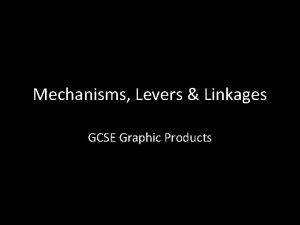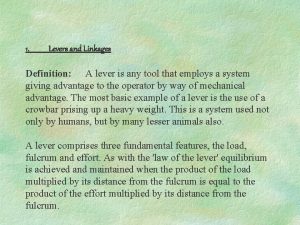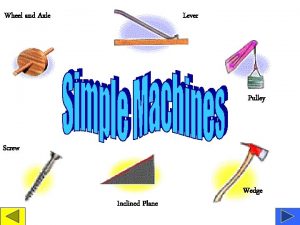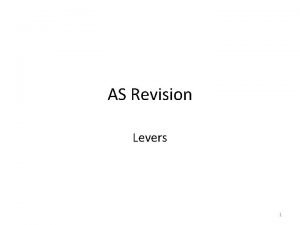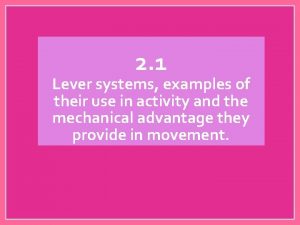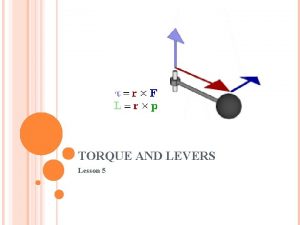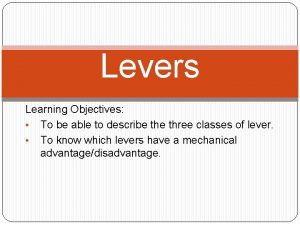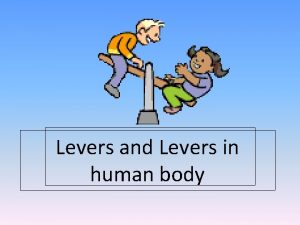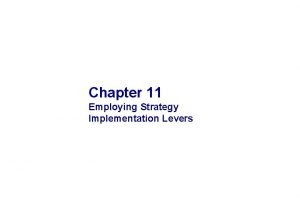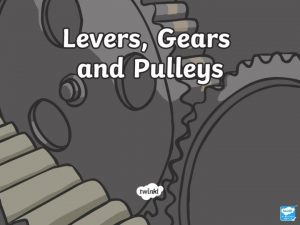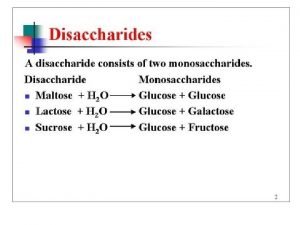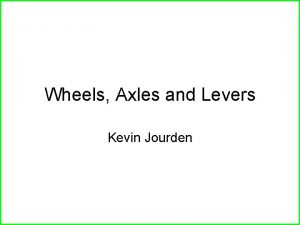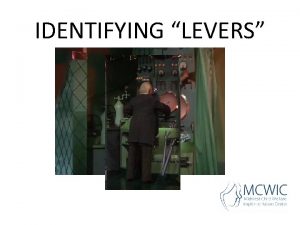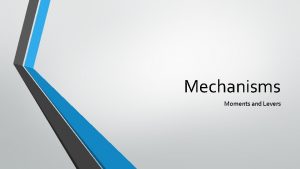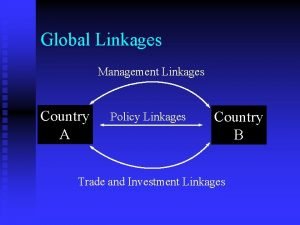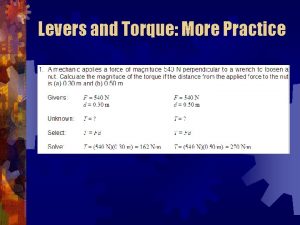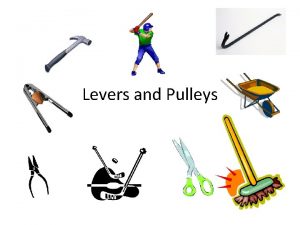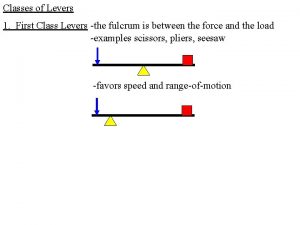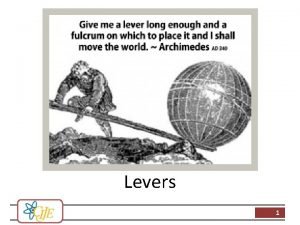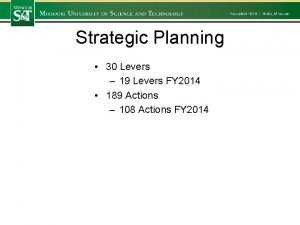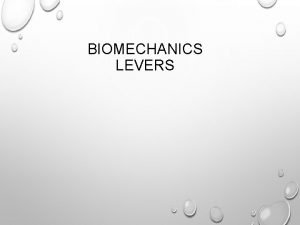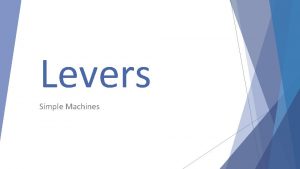Design Technology o Mechanisms Levers and linkages W
















- Slides: 16

Design & Technology o Mechanisms- Levers and linkages W hat W hy o To be aware of how they are used in Design and technology. W here o 50% of your final examination grade. Believe Achieve Approach the task positively Try to exceed my target! Succeed Complete all tasks Enjoy Support Have fun, but work Safely Work independently and support each other

What is a mechanism? A mechanism is a system of parts working together in a machine. What do they do? They make jobs easier to do, change the direction, motion or speed. How do they work? They work in the same way as an electrical system Input Process The input starts the system The mechanical parts, react to the input and start moving. e. g. pedaling a bike e. g. the pedals turns the gears which turns the wheels Output The change in direction, motion or speed. e. g. the bike starts moving

Different types of mechanisms Can you name any types of mechanisms? Rack and pinion mechanism Pulley mechanism Lever mechanism Gear mechanism Linkages mechanism Cam mechanism

Levers A lever is the simplest kind of mechanism, it consists of a ridged bar that pivots at a fixed point. • There are three different types of lever, usually called classes. • The class of a lever depends on the position of the load, effort and fulcrum: Common use of a lever is to lift a heavy load.

What is the load, fulcrum and effort? The load is the object you are trying to move or effect. The fulcrum is the point that doesn't move from it's spot. The effort is the point where force is added. Usually it's where someone will push or pull on the lever.

Class 1 A class 1 lever has the load and the effort on opposite sides of the fulcrum, like a seesaw

Class 2 A Class 2 lever has the load between the effort and the fulcrum

Class 3 Levers A class 3 lever has the effort in- between the load and the fulcrum.

How to remember? F 1 L 2 E 3 When the fulcrum is in the middle it is a class 1 lever When the load is in the middle it’s a class 2 lever When the effort is in the middle it is a class 3 lever.

Linkages A linkage is a mechanism made by connecting together levers. What do you think would happen to the motion if the fixed point was not central? As the top rod moves to the left the bottom rod moves to the right. The bars move in opposite directions. Linkages are used to • Create a change in direction • Change the type of motion Mechanical lift https: //www. youtube. com/watch? v=D_KIOr_Tpc. M

A cam is a shaped piece of metal or plastic fixed to a rotating shaft. When the cam rotates, the follower rises. CAMS Cams are used to turn rotary motion into linear motion.

An eccentric cam is a disc with its centre of rotation positioned ‘off centre’. The movement is smooth and at a constant speed. What difference do you think a bigger cam will make to the speed?

Parts of a cam mechanism.

1. Rise (move up) 2. Fall (move down) or 3. Dwell (remain stationary)

Questions What are the 3 parts of a lever called? 3 RD CLASS What is a class one lever? 1 ST CLASS What is a class two lever? What is a class 3 lever? 2 ND CLASS

What happens if the fixed point it not central? What is this “off centre” cam called? How could you change the speed of the follower? REVERSE MOTION LINKAGE Make the cam bigger - slower speed Make the cam smaller- faster speed. It would create a larger or smaller motion in the opposite direction.
 Lever linkage mechanisms
Lever linkage mechanisms Defination of lever
Defination of lever Satalite weather
Satalite weather Community linkages and professional engagement meaning
Community linkages and professional engagement meaning Jalinan dan jaringan (networking and linkages)
Jalinan dan jaringan (networking and linkages) Scheme for creation of backward and forward linkages
Scheme for creation of backward and forward linkages Inclined plane lever
Inclined plane lever The ankle is a third class lever
The ankle is a third class lever Example of first class lever in sport
Example of first class lever in sport Torque and levers
Torque and levers Advantages and disadvantages of second class levers
Advantages and disadvantages of second class levers Fixed pulley examples in human body
Fixed pulley examples in human body Levers rewards and rights
Levers rewards and rights Gears pulleys and levers
Gears pulleys and levers Moment of inertia of a door
Moment of inertia of a door Ncbts learning outcomes
Ncbts learning outcomes Maltose acetal
Maltose acetal
